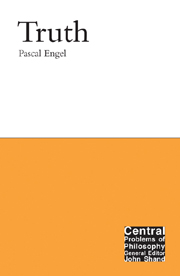Conclusion: Truth regained
Summary
The question from which we started was: can truth be defined? In Chapter 1, we departed from the substantive theories that give a positive answer to this question. In Chapter 2 we resisted the deflationist move that attempts to empty truth of any substance. In Chapters 3 and 4, we took the minimal realist line that allows our concept of truth to keep slim, without preventing us from accepting realism about truth-aptness. This led us to a reinflation, or resubstantialization, of the concept of truth and of the property that it denotes. But the “substance” that was thus reintroduced is not the substance that was aimed at by the definitional attempts of traditional theories. Truth has substance because it is constitutively linked to belief, assertion and knowledge and because it is a normative property of our knowledge-seeking enquiries. Truth in this sense is indefinable because it is a concept that cannot be analysed except from its relations with these other concepts. I concur in this respect with Davidson when he says:
For the most part the concepts philosophers single out for attention, like truth, knowledge, belief, action, cause, the good and the right, are the most elementary concepts without which (I am inclined to say) we would have no concepts at all. Why then should we be able to reduce these concepts definitionally to other concepts that are simpler, clearer, and more basic?
(Davidson [1995] 1999: 309)- Type
- Chapter
- Information
- Truth , pp. 147 - 150Publisher: Acumen PublishingPrint publication year: 2002



